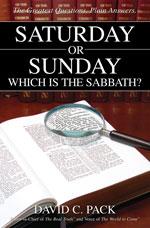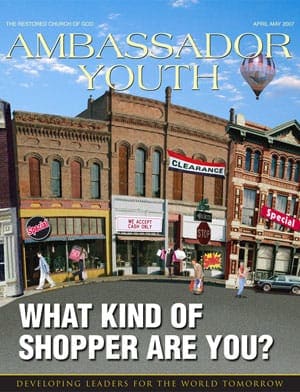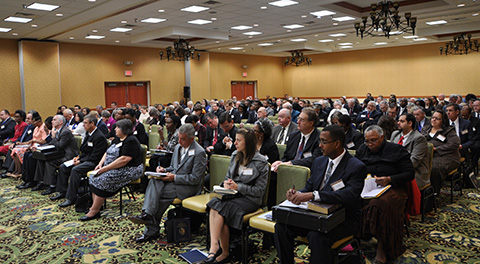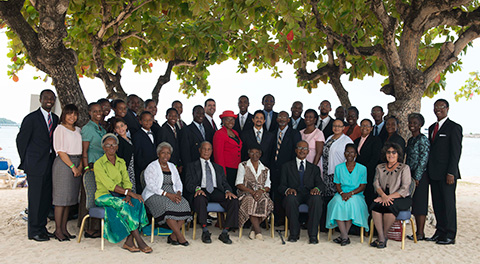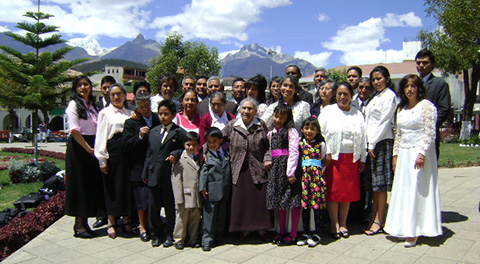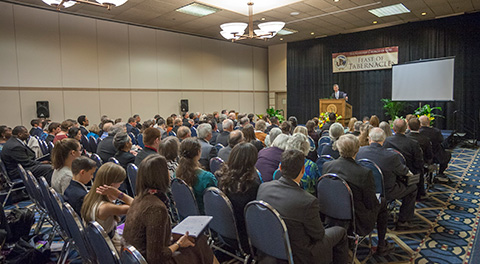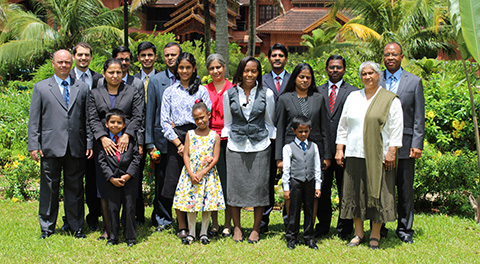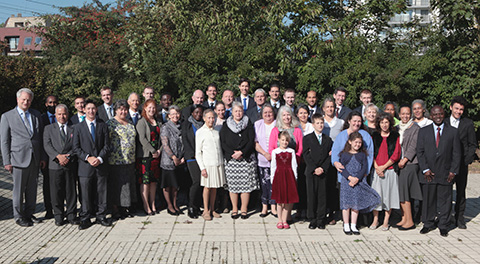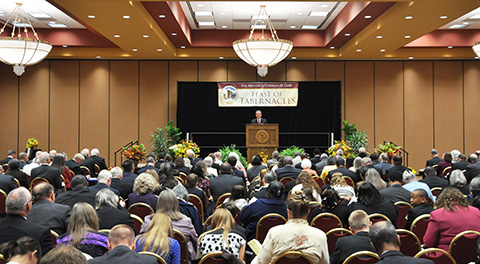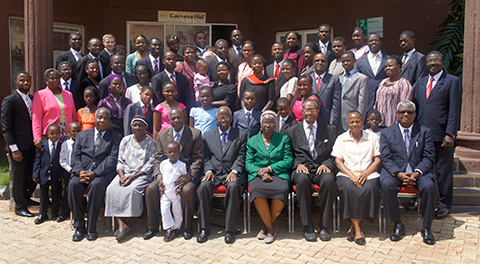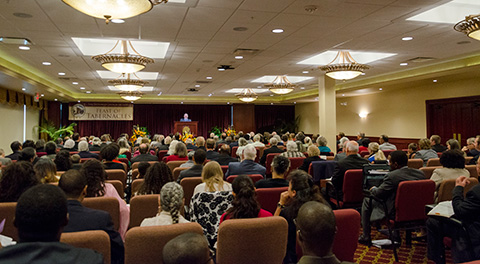To fully understand what it is like to be a teen in Australia, we should first learn some facts about the country itself. We will start with some brief history.
Before European settlers discovered Australia, it was inhabited by Aborigines and Torres Strait Islanders. In 1606, the Dutch first discovered Australia, and other European explorers continued to chart the coast of what was then known as New Holland.
The first British explorer to land on Australia was William Dampier in 1688. But it wasn’t until Captain James Cook’s rediscovery of it in 1770 that the British claimed and settled the land.
Britain used Australia as a penal colony, sending convicts to Australia on ships. “The First Fleet” landed in Sydney Harbour on January 26, 1788. It is on this day each year that Australians celebrate “Australia Day.”
In 1901, the Commonwealth of Australia was formed through the federation of six states under one constitution.
In World War I, Australia confirmed its national identity of courage, spirit and “mateship.” This war had a devastating impact on the nation, as there were less than three million men living in Australia. Out of the 400,000 that signed up for the war, 60,000 died; tens of thousands were injured.
Although a continent in itself, Australia has a relatively small population of just over 20 million people, who come from all corners of the world. Most live on or near the coast, as this area receives the greatest rainfall. Due to the large expanse of desert in its centre, Australia is largely uninhabitable.
The country boasts of having two of the seven natural wonders of the world, Uluru and the Great Barrier Reef.
Flora, Fauna and Landscape
Australia has a diverse range of natural habitats. The most northerly point lies on the equator, and Tasmania, located south, is 3,443 km. (2,139 mi.) from the Antarctic base.
People living in one of the main cities can usually reach the beach, outback country, bushland or rainforest within two hours.
The country’s relatively small population results in things being more spread out, leaving a lot of space for flora. The “Australian Dream” is for each family to own its own house, with its own backyard. This dream has inspired the layout of our cities so that most houses have decently sized yards, perfect for backyard cricket and barbeques. Many backyards include native Australian gumtrees that were never cleared away. These native plants encourage birds and smaller animals to take up residence in our yards. Thus, it is quite common to have possums close to home.
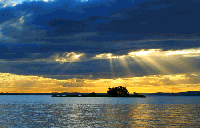
“Golden Island,” taken at Soldiers Point
Source: ArtToday, Inc.
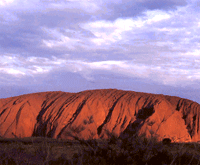
Uluru (Ayers Rock), Kata Tjuta National Park
Source: ArtToday, Inc.
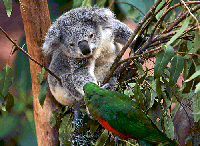
A Koala and a parrot having a quarrel
Source: ArtToday, Inc.
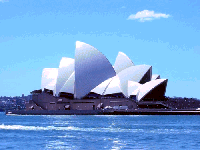
Sydney Opera House is home to the Sydney Symphony Orchestra
Source: ArtToday, Inc.
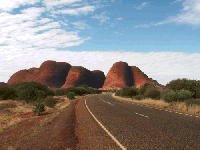
Source: ArtToday, Inc.

Telstra Rally
Source: ArtToday, Inc.
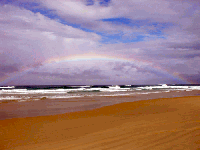
A rainbow, captured at Fraser Island
Source: ArtToday, Inc.
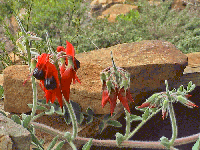
“Sturt’s Desert Pea,” the emblem of South Australia
Source: ArtToday, Inc.

Source: ArtToday, Inc.
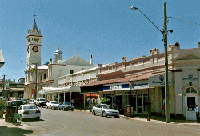
Route 66 in Queensland
Source: ArtToday, Inc.
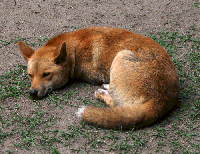
A dingo, a type of wild dog
Source: ArtToday, Inc.
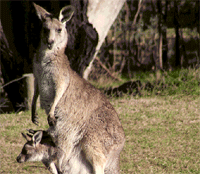
Mama kangaroo carrying her joeys
Source: ArtToday, Inc.
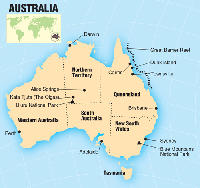
Source: The Restored Church of God
Some of the most unique flora and fauna in the world can be found in Australia, and it is the only country where native land animals are nearly all marsupials or monotremes. A marsupial is a mammal whose females have a pouch to nurse its young (for example, the kangaroo, koala and wombat); a monotreme is a mammal that lays eggs (the platypus and echidna). Australia is also home to seven of the world’s ten most poisonous snakes.
Being a land girt by sea, much of the continent’s wildlife live in the water. Humpback whales swim along the coast as they migrate each year, and dolphins enjoy the shallow waters off the many islands close to shore. The waters are relatively safe to swim in, with shark nets in place wherever sharks are known to frequent, and lifesavers (lifeguards) are on hand if a swimmer is stung by a bluebottle (Portuguese Man O’ War).
Language
Australia has always struggled with its identity on the world scene. As a young country, the things that set it apart have already begun to be phased out by globalization. Australia, like many other countries, is becoming more “Americanized.”
This can be seen in our language. Words and phrases such as “fair dinkum” (fair, genuine, honest or true) are being lost amidst the onslaught of technological vocabulary and popular American slang. Yet Australian teens do still speak “Aussie English,” not yet calling petrol “gas” or referring to mobiles as “cellphones.”
Worldview
To the average “Aussie,” Australia seems to be an important part of the world. However, the rest of the world is still rather uneducated about Australia. Some people believe Australian children ride kangaroos to school; others think we just keep them alternatively with koalas and possums as pets. Still more believe that “G’day” is actually a common greeting. Only one of these is true!
Life for the average Australian teen is similar to that of teens in America or England. Most go to school, have jobs and prefer to spend time with friends over family.
Australians are, however, a more relaxed, laidback society compared to other nations. Personal pleasure, entertainment and fun are the main objects in the lives of most Australians. This ideal springs mostly from the citizens’ “convict heritage.” Due to this, Australians are informal and tend to have a rebellious attitude toward authority.
Although the ages of 13 to 19 are generally thought of as teenagers, Australians consider 12- to 17-year-olds as teenagers. During these years, teens go to high school. After graduating and turning 18, an Australian is then considered an adult and is legally allowed to purchase alcohol and cigarettes, and to vote.
School
Each state has a different education system; most have a 13-year schooling system, including a mandatory pre-school year. Students start primary school when they turn age six, and continue for seven years.
High school begins in year 8, continuing through to year 12. The school year begins at the end of January and finishes sometime in November or December (when summer in the Southern Hemisphere begins), depending on the school and year. A school year is broken up into two semesters, which are each broken into two terms: a small holiday break separating each, and a longer break separating one year from the next.
Each school decides how many subjects a student can take, somewhere between five and seven. English and Mathematics are both compulsory in most states throughout all school years. Students can choose any subject they wish. If the school does not offer it onsite, Distance Education (DE) can be arranged.
Children living in the outback do all their schooling through DE. Upon entering senior (year 11 and 12), students must choose subjects that will be continued until graduation. In senior year, students can also choose to take a school-based traineeship. This enables them to complete a certificate or begin an apprenticeship while still studying at school.
Rural schools are so small that they usually have only one or two teachers on staff. Due to the low number of students and teachers, the classes are merged into one or two rooms. It is also difficult for schools to find teachers to employ, as not many want to live in the country, where they will miss the many luxuries that city life offers.
Almost every school in Australia has a mandatory school uniform that is designed to minimize discrimination. Most school uniforms are similar, mainly differing in colour.
There are a large number of state and private schools sprinkled throughout the country. School is normally within walking distance or along a bus route.
Work
Most teens do not like to rely on their parents for financial support; many take on casual (part-time) work at the local supermarket or fast-food restaurant. Teens under the age of 16 are not allowed to work more than 12 hours a week. Those under 16 must have parental permission to be employed.
Sports
Sports are an integral part of nearly all Australians’ lives, with cricket, football (soccer) and swimming being the most popular. Most teens participate in at least one after-school sport throughout the year. Most girls choose netball (similar to basketball), and boys often choose rugby or cricket.
Competition between states and countries is high in Australia. Lately, flags or certain songs and chants have been banned within stadiums due to the high spirits they incite and the rowdy—sometimes violent—behavior that accompanies them.
Leisure
With 80% of Australians living within 100kms (62 mi.) of the beach, a trip to the ocean is often a means for fun. Anticipating this, swimming lessons are compulsory in nearly all primary schools, and upper primary and lower high school often teach survival swimming and resuscitation techniques.
There are many other activities available in which teens can participate. Within cities there are several shopping centres, bike paths, skating bowls, bowling alleys, movie theatres and a popular favourite: laser tag and paintball facilities.
Sadly, many teens spend their free time on Friday or Saturday night partying. Just over 10% of Australian teens binge drink every week. Drugs are relatively easy to obtain for parties as well—more than 20% of teens interviewed in 2001 claimed to have recently used marijuana.
Family
Family is taken for granted by most teens, therefore it usually comes last. Teenagers tend to spend a vast amount of time text-messaging, IM-ing and online chatting with their friends rather than with their family—thus a gap is forming in family life.
Ironically, a 2006 survey by Families Australia showed that the majority of teens consider time to be the most important thing they would like from their parents (youthfacts.com.au).
Divorce is increasing in Australia. New data shows that the likelihood of divorce is 32% (abs.gov.au). The proportion of divorces involving children is above 50%.
Despite the facts and figures, family is family, and Australians feel a deep loyalty and pride toward their relatives.
P.S. Australians really do say “G’day.”

